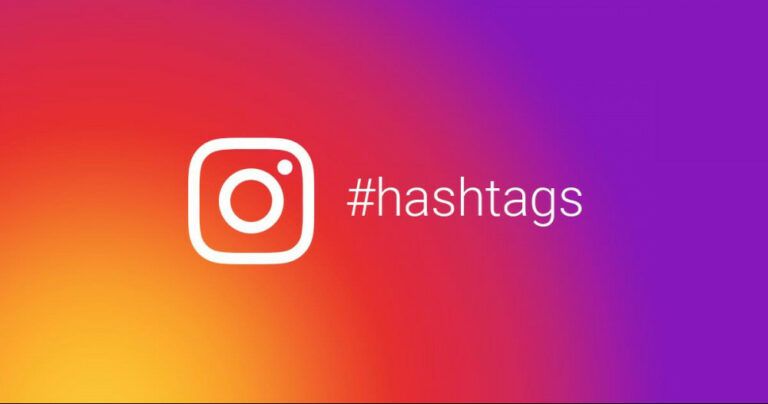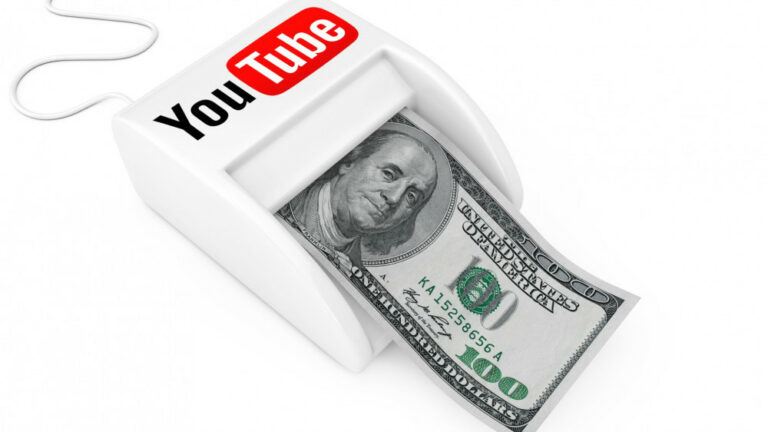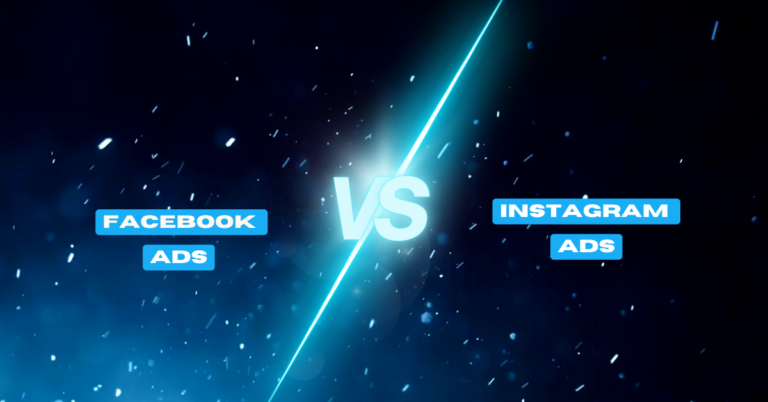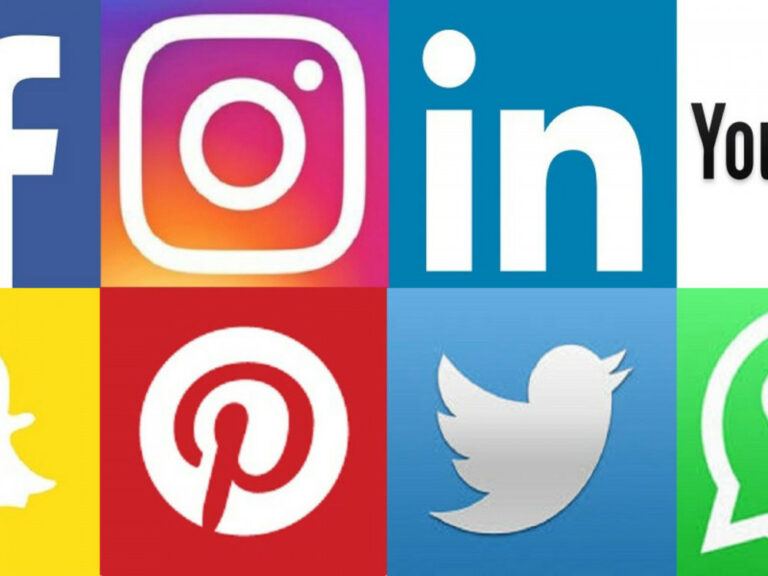Social Media Growth Statistics
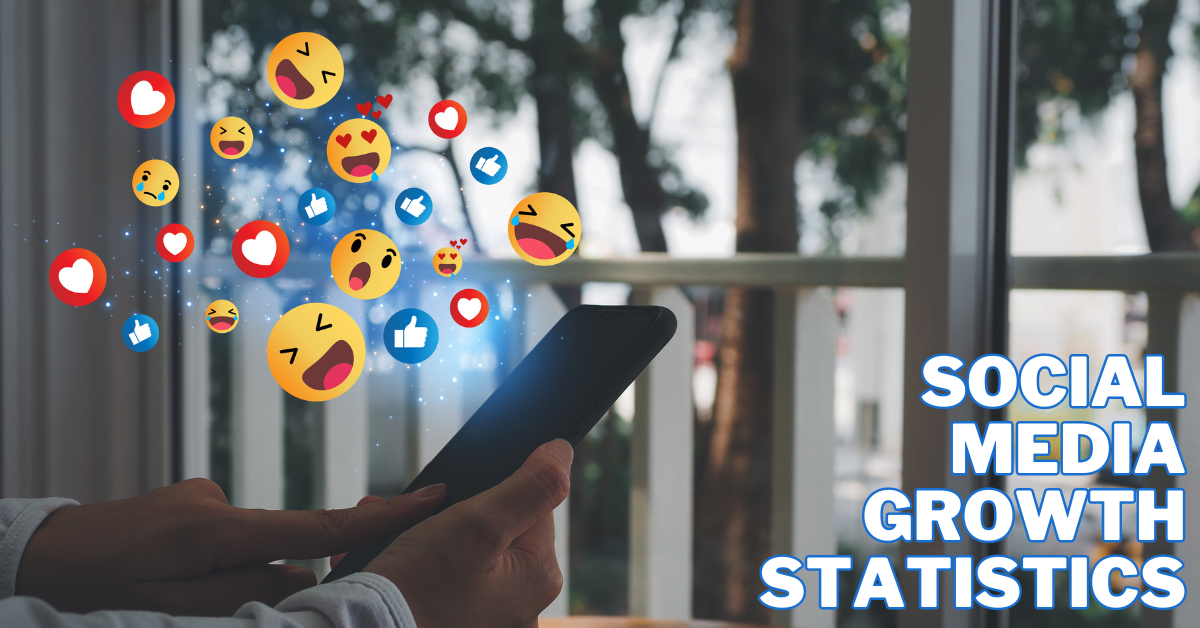
Social Media Growth Statistics
Social media is a dynamic force propelling unprecedented growth and transformation in the dynamic field of digital marketing.
It has gained importance as companies increasingly realize how social media platforms can help them engage with their customers.
Due to the explosive expansion of social media platforms, marketing tactics, communication patterns, and customer behaviour have changed.
This article will delve into the comprehensive social media growth statistics, offering insights into its influence on businesses worldwide.
This article examines key metrics such as user engagement, advertising spending, emerging technologies, and the evolving role of social commerce to provide a detailed exploration of the statistical underpinnings driving the expansion of social media marketing.
Businesses may adjust their tactics, maximize their return on investment, and fully utilize social media platforms to reach and engage their target audience by carefully examining these figures.

Overview Of Social Media Platforms
The landscape of social media platforms is diverse and dynamic, encompassing various platforms catering to different demographics and interests.
Prominent competitors in the market include Facebook, which has over 2.8 billion monthly active users (MAUs) and continues to be a mainstay of social media marketing campaigns because of its massive user data and strong advertising features.
Instagram, owned by Facebook, has rapidly grown to over 1 billion MAUs. It is particularly popular among younger demographics for its visually driven content and influencer culture.
With around 330 million MAUs, Twitter remains a vital platform for real-time news, customer service, and engagement with niche communities.
LinkedIn, focusing on professional networking, has over 700 million users, making it indispensable for B2B marketing and recruitment efforts.
Want to Start Making Money Online?
Try My #1 Recommendation Program!
TikTok, the video-sharing sensation, has exploded in popularity, amassing over 1 billion MAUs globally, predominantly among Gen Z and Millennials, offering marketers new avenues for creative and viral content.
Snapchat, known for its ephemeral messaging and AR filters, maintains a dedicated user base of over 300 million daily active users (DAUs), appealing primarily to younger demographics.
In addition to these major platforms, emerging players are making waves in the social media landscape.
Platforms like Clubhouse, with its audio-based social networking, and Discord, originally designed for gamers but now embraced by diverse communities, are gaining traction, offering unique engagement opportunities for brands willing to explore innovative channels.
User demographics vary significantly across each platform, influencing marketers' strategies and targeting efforts.
Facebook and Instagram attract a broad demographic range with a slightly younger skew on Instagram.
Twitter attracts an educated and affluent user base interested in news and trending topics. LinkedIn caters predominantly to professionals and B2B audiences.
At the same time, TikTok and Snapchat skew heavily towards younger users, particularly Gen Z. Understanding these nuances is crucial for crafting tailored content and campaigns that resonate with each platform's user base.

Growth Trends In Social Media Marketing
Social media growth statistics reveal a remarkable global expansion driven by increasing internet penetration and smartphone proliferation.
They showcase consistent upward trajectories across platforms like Facebook, Instagram, and TikTok.
A key driver of this growth is the increasing internet penetration worldwide, coupled with the proliferation of smartphones, enabling more people to access social media platforms.
Global adoption rates indicate a consistent upward trajectory, with platforms like Facebook, Instagram, and TikTok experiencing unprecedented user growth year over year.
Want to Find Out How To Start Your Home-Based Business?
Try My #1 Recommendation Platform!
However, regional variances in adoption paint a nuanced picture of social media usage. While developed regions like North America and Europe boast high adoption rates, emerging markets in Asia-Pacific, Latin America, and Africa are rapidly growing, fueled by improving internet infrastructure and rising smartphone affordability.
It's imperative for marketers who want to effectively reach new audiences and penetrate new markets to comprehend these regional nuances.
Moreover, adoption rates vary significantly across industries, with certain sectors embracing social media marketing more enthusiastically than others.
Industries like retail, e-commerce, and fashion have embraced social media as a cornerstone of their marketing strategies, leveraging platforms like Instagram and Pinterest for product discovery and sales.
Conversely, traditionally conservative sectors like healthcare and finance increasingly recognize the importance of social media in building brand authority and engaging with consumers.
Personalized experiences and immersive content have helped the entertainment and hospitality industries leverage social media platforms to increase engagement and cultivate brand loyalty.
Social media is becoming increasingly integrated into everyday life, and businesses from all sectors and places realize how important it is to connect and interact with consumers.
Keeping abreast of global, regional, and industry-specific adoption trends is essential for marketers to capitalize on emerging opportunities and stay ahead in the ever-evolving landscape of social media marketing.

Social Media Usage Statistics
Usage statistics vividly show social media's immense impact and prevalence in our daily lives.
Daily Active Users (DAU) testify to the constant engagement and interaction on social media platforms.
With billions of users logging in daily to connect, share, and consume content, social media's influence on global communication and culture is undeniable.
Similarly, Monthly Active Users (MAU) provide insights into the sustained popularity and reach of these platforms, reflecting the vast user base that engages with social media regularly.
Time spent on social media platforms further highlights the immersive nature of these digital spaces.
Users dedicate significant portions of their day to browsing, scrolling, and engaging with content.
Whether it's catching up on news updates, connecting with friends and family, or exploring trending topics, social media has become an integral part of many people's daily routines.
Device usage trends offer additional insights into how users access social media content, with mobile devices increasingly dominating the landscape.
Smartphones' convenience and portability have fueled a shift towards mobile-centric usage, enabling users to stay connected on the go.
This trend underscores marketers' importance in optimizing their content for mobile platforms, ensuring seamless accessibility and engagement across devices.
These usage statistics are important markers of social media's shifting social role as it changes and adapts to user preferences and behaviour.
Social media remains a dynamic and influential force in the digital age, shaping consumer trends, driving conversations, and fostering communities.

Social Media Engagement Metrics
Social media growth statistics demonstrate the significance of engagement metrics as vital indicators of audience interactions and brand resonance.
They showcase the impact of likes, shares, and comments in gauging content relevance and driving organic amplification.
Likes, shares, and comments serve as tangible indicators of user engagement, reflecting how content resonates with audiences and inspires action.
These metrics signify the reach and visibility of content and gauge its relevance and impact within the community.
A high volume of likes, shares, and comments suggests that content is compelling, sparking conversations and driving organic amplification.
Click-through rates (CTR) provide a deeper engagement measurement, indicating the effectiveness of call-to-action (CTA) prompts and content relevance in driving traffic to external links.
A high CTR signifies that content has captured audience interest and motivated them to take action, whether visiting a website, signing up for a newsletter, or purchasing.
Conversion rates are the gold standard in social media marketing. They show what percentage of users complete a desired action, such as completing a form or purchasing.
Conversion rates inform marketers how well their social media strategies deliver ROI and observable business results.
Influencer engagement offers a unique perspective on audience interactions. It relies on the partnership between businesses and influencers to truly reach and engage target audiences.
Metrics such as influencer reach, engagement rate, and sentiment analysis provide insights into the effectiveness of influencer partnerships in driving brand awareness, credibility, and affinity.
Together, these engagement metrics form a comprehensive framework for evaluating the performance and impact of social media marketing efforts.
Marketers can refine their strategies by analyzing and optimizing these metrics to foster deeper connections, drive meaningful interactions, and ultimately achieve their business objectives.

Content Consumption Trends On Social Media
Social media growth statistics highlight the evolution of content consumption trends, with video content consumption emerging as a dominant force across platforms like TikTok, Instagram Reels, YouTube, and Facebook Watch, showcasing its immersive storytelling and visual appeal to captivate audiences effectively.
Video content consumption has emerged as a dominant force, captivating audiences with its immersive storytelling and visual appeal.
From short-form videos on platforms like TikTok and Instagram Reels to long-form content on YouTube and Facebook Watch, video has become the preferred medium for consuming information, entertainment, and advertising.
Live streaming represents another burgeoning trend in content consumption, offering real-time engagement and authenticity.
Platforms like Facebook Live, Instagram Live, and Twitch have democratized live broadcasting, enabling individuals and brands to connect with audiences more intimately and interactively.
Live streaming has gained traction across various domains, from gaming and entertainment to e-commerce and education, fostering deeper connections and driving engagement.
Are You Tired Of Scams?
Try The Most-Trusted Training Platform To Make Money Online!
User-generated content (UGC) has become a significant player in content consumption. It utilizes users' originality and creativity to increase interaction and promote brands.
Platforms like Instagram, TikTok, and Reddit thrive on user-generated content, empowering individuals to share their stories, experiences, and creativity.
UGC fosters community engagement and enhances brand authenticity and credibility by showcasing real-life experiences and testimonials.
Stories and Fleets have revolutionized content consumption on social media, offering brief and immersive experiences that cater to short attention spans.
Platforms like Instagram, Snapchat, and Twitter have embraced the Stories format, enabling users to share temporary content that disappears after 24 hours.
Fleets, Twitter's version of Stories, similarly provides a platform for users to share fleeting moments and updates in a visually engaging format.
Overall, these content consumption trends underscore the dynamic nature of social media platforms and users' evolving preferences.
By embracing video content, live streaming, user-generated content, and brief formats like Stories and Fleets, brands can captivate audiences, foster engagement, and stay relevant in an ever-changing digital landscape.

Emerging Technologies In Social Media Marketing
Social media growth statistics underscore the transformative impact of emerging technologies like Augmented Reality (AR).
These technologies enable brands to deliver immersive experiences and drive engagement through innovative AR filters and lenses on platforms like Instagram and Snapchat.
With smartphone cameras, companies can now use augmented reality (AR) to superimpose digital components in the real environment, changing the game.
AR filters and lenses on platforms like Instagram and Snapchat enable users to try on virtual products, experience branded AR effects, and engage with interactive content in real-time, enhancing brand awareness and driving engagement.
Virtual Reality (VR) represents another frontier in social media marketing, offering fully immersive experiences that transport users to virtual environments.
While still in their infancy in the social media realm, platforms like Facebook's Oculus and YouTube VR are paving the way for brands to create compelling VR content and virtual experiences.
From virtual product demonstrations to immersive brand storytelling, VR has the potential to revolutionize how brands connect with their audience on social media.
Artificial Intelligence (AI) is increasingly integrated into social media platforms to enhance user experiences and optimize content delivery.
AI-powered algorithms analyze user data and behaviour to personalize content recommendations, optimize ad targeting, and automate customer service interactions.
Artificial intelligence-driven chatbots enhance user satisfaction and boost conversions by promptly answering consumer inquiries and streamlining the customer journey.
Blockchain technology also waves in social media marketing, offering solutions to address transparency, authenticity, and data security issues.
Blockchain-powered social media platforms promise decentralized control over user data, enabling users to retain ownership and control over their content and interactions.
Moreover, blockchain-based tokens and smart contracts facilitate new monetization models, rewarding users for their contributions and fostering a more equitable and transparent social media ecosystem.
In an increasingly digital environment, these developing technologies provide brands unique and exciting opportunities to differentiate and reinvent their social media marketing tactics, leading to deeper audience engagement.

Challenges And Opportunities In Social Media
Navigating social media marketing's ever-changing terrain offers opportunities and obstacles for organizations looking to realize its promise fully.
As data breaches and privacy scandals continue to make news, users and advertisers alike are increasingly concerned about privacy and rules.
Tighter laws, like California's CCPA and Europe's GDPR, highlight the crucial role of accountability and transparency in data handling procedures.
Notwithstanding, these restrictions allow brands to cultivate trust and allegiance by prioritizing data protection and implementing comprehensive security protocols.
Want To Learn How To Create Your Own Website And Online Business?
Try My #1 Recommendation Training And Hosting Platform!
Social media sites regularly tweak their algorithms to promote particular kinds of content and interactions, which presents another hurdle for marketers.
While these changes can disrupt established strategies and reduce organic reach, they also compel marketers to stay agile and adapt their tactics to align with evolving algorithms.
By staying informed about algorithm updates and focusing on producing high-quality, engaging content, brands can maintain visibility and relevance on social media platforms.
Fake news and misinformation represent a pervasive threat to the integrity of social media platforms, eroding trust and fueling divisiveness among users.
As purveyors of information, brands are responsible for combating misinformation and promoting accuracy and credibility.
By investing in fact-checking mechanisms, fostering media literacy, and partnering with authoritative sources, brands can position themselves as reliable sources of information and contribute to a healthier online discourse.
Social media growth statistics emphasize the significance of integrating social media strategies with other marketing channels.
This enables brands to amplify reach, reinforce messaging consistency, and drive deeper engagement and conversions, enhancing overall marketing effectiveness in a digitally connected ecosystem.
By aligning social media strategies with email marketing, content marketing, influencer partnerships, and other channels, brands can amplify their reach, reinforce messaging consistency, and drive deeper engagement and conversions.
Seamless integration enables brands to leverage the strengths of each channel and create synergies that enhance overall marketing effectiveness in a digitally connected ecosystem.

Future Outlook Of Social Media
Social media marketing is expected to continue growing and changing due to changing customer behaviour, new trends, and technological improvements.
Forecasts for its rise point to a trajectory of steady expansion driven by rising smartphone usage, internet penetration, and social media integration into everyday life.
Brands will have more possibilities to meaningfully interact with audiences as social media platforms continue to innovate and diversify, which will enhance social media marketing adoption and investment.
Emerging trends in social media marketing include the rise of video content, particularly short-form videos and live streaming, as users gravitate towards more immersive and interactive experiences.
Augmented reality (AR) and virtual reality (VR) technologies are also expected to gain momentum, offering new avenues for brands to create immersive brand experiences and engage with audiences innovatively.
Additionally, the rise of temporary content formats like Stories and Fleets will give brands opportunities to deliver timely and authentic content that resonates with audiences.
Marketers must adjust their strategy to take advantage of new trends and changing consumer preferences to succeed in this dynamic environment.
Strategies for marketers to adapt include prioritizing authenticity and transparency, fostering genuine connections with audiences, and embracing a data-driven approach to content creation and audience targeting.
Moreover, brands must remain agile and responsive to changes in social media algorithms and regulations while diversifying their presence across multiple platforms to reach diverse audiences effectively.
By staying attuned to emerging trends and adopting flexible and forward-thinking strategies, marketers can position their brands for success in the ever-evolving world of social media marketing.
Conclusion
In conclusion, the growth statistics of social media marketing highlight its unquestionable influence and potential in the digital marketing landscape.
This is demonstrated by the rapidly rising adoption rates of social media worldwide, fueled by growing internet connectivity, ubiquitous influence in daily life, regional variations, industry-specific trends, and emerging technologies.
As highlighted throughout this article, global adoption rates of social media marketing continue to soar, driven by increasing internet connectivity and social media's pervasive influence in daily life.
Regional variances in adoption, industry-specific trends, and emerging technologies further contribute to the dynamic nature of social media marketing growth.
Social media growth statistics underscore its undeniable importance as a cornerstone of modern marketing strategies.
It offers boundless opportunities for brands to connect, engage, and thrive in the ever-evolving digital age by staying informed, agile, and responsive to changing consumer behaviours and technological advancements.
By staying informed, agile, and responsive to changing consumer behaviours and technological advancements, marketers can harness the full potential of social media marketing to propel their brands forward in an increasingly digital and interconnected world.
I trust you enjoyed this article on Social Media Growth Statistics. Please stay tuned for more articles to come soon. Take care!
JeannetteZ
Want to Learn How to Build Your Own Home-Based Online Business & Start Making Money Online From Your Comfortable Couch?
Try Wealthy Affiliate!
Your Opinion Is Important To Me
Do you have thoughts, ideas, or questions? I would love to hear from you. Please leave me your questions, experiences, remarks, and suggestions about Social Media Growth Statistics in the comments below. You can also email me at Jeannette@WorkFromAnywhereInTheWorld.com.
Disclosure
This post may contain affiliate links. I earn from qualifying purchases as an Amazon Associate and other affiliate programs. Please read my full affiliate disclosure.
You may also enjoy the following articles:
Wealthy Affiliate Review – Scam or Legit? The Truth Exposed
How To Make Money On Instagram
How To Refinance Your Home Mortgage


